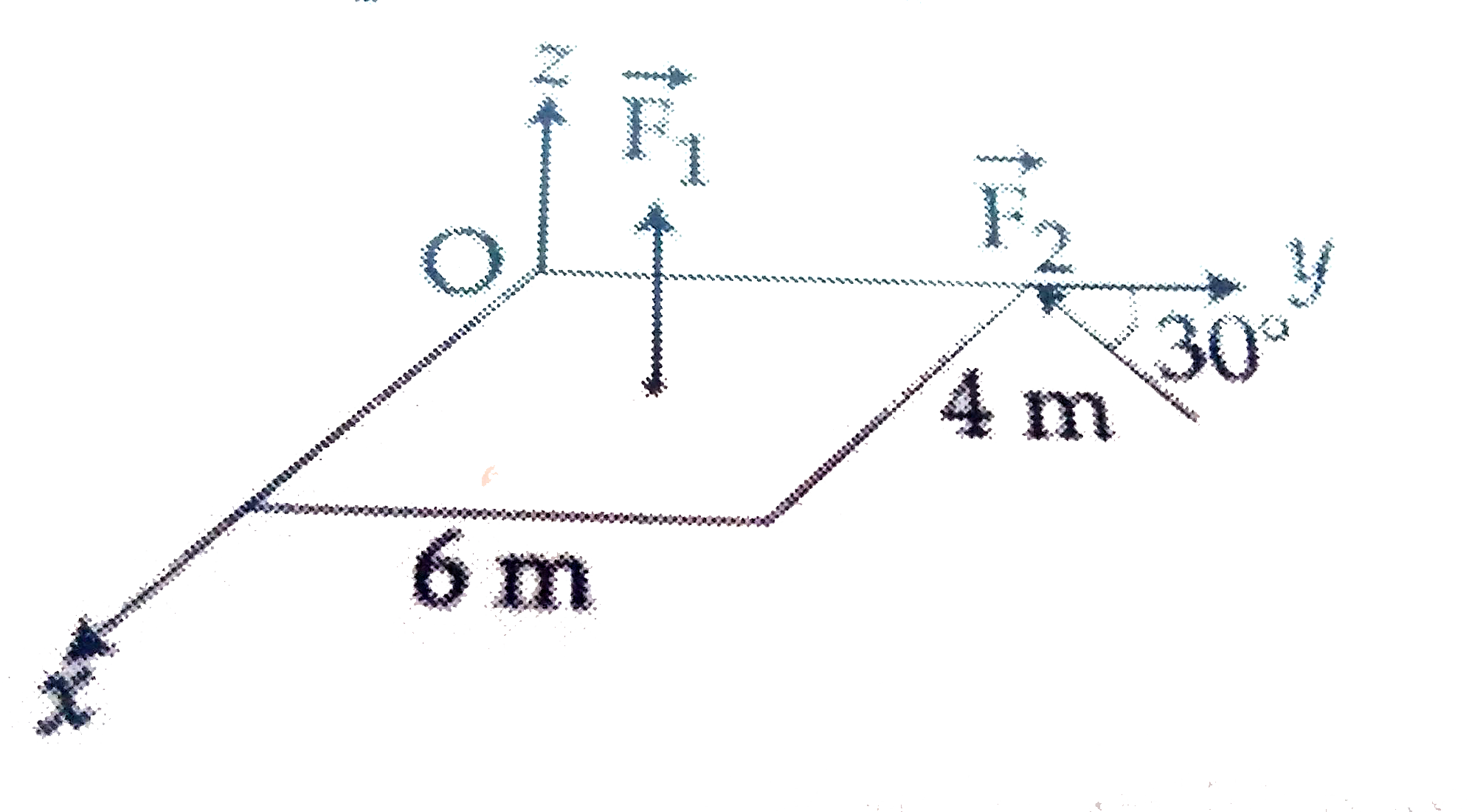If →F is the force acting in a particle having position vector →r and →τ be the torque of this force about the origin, then
r.τ=0andF.τ=0
r×τ=0andF×τ≠0
r.τ≠0andF.τ≠0
r×τ≠0andF×τ=0
The correct Answer is:A
Torque, τ=r×F i.e., τ is perpendicular to both r and F
∴τ.r=0andτ.F=0
Topper's Solved these Questions
- ROTATIONBook:DC PANDEYChapter:ROTATIONExercise:(B) Chapter Exercises
Explore 25 Videos
- ROTATIONBook:DC PANDEYChapter:ROTATIONExercise:(C) Chapter Exercises
Explore 39 Videos
- ROTATIONBook:DC PANDEYChapter:ROTATIONExercise:Check point 9.3
Explore 15 Videos
- RAY OPTICSBook:DC PANDEYChapter:RAY OPTICSExercise:Integer type q.
Explore 15 Videos
- ROTATIONAL MECHANICSBook:DC PANDEYChapter:ROTATIONAL MECHANICSExercise:Subjective Questions
Explore 2 Videos
Similar Questions
A force →F=(2ˆi+3ˆj+4ˆk) N is applied to a point having position vector →r=(3ˆi+2ˆj+ˆk) m. Find the torque due to the force about the axis passing through origin.
View SolutionIf →a,→b,→c are the position vectors of the vertices of an equilateral triangle whose orthocenter is at the origin, then
View Solution
Knowledge Check
Let →F be the force acitng on a paritcle having positon vector →rand→T be the torque of this force about the origin. Then
A→r.→T=0and→F.→T=0B→r.→T=0and→F.→T≠0C→r.→T≠0and→F.→T=0D→r.→T≠0and→F.→T≠0Let →F be the force acting on a particle having position vector →r and →τ be the torque of this force about the origin. Then
A→r.→τ≠0and→F.→τ≠0B→r.→τ=≠0and→F.→τ=0C→r.→τ=≠0and→F.→τ≠0D→r.→τ=0and→F.→τ=0Let →F be the force acitng on a paritcle having positon vector →rand→T be the torque of this force about the origin. Then
A→r.→Γ=0and→F.→Γ=0B→r.→Γ=0but→F.→Γ≠0C→r.→Γ≠0but→F.→Γ=0D→r.→Γ≠0and→F.→Γ≠0
A slab is subjected to two forces →F1and→F2 of same magnitude F as shown in the figure . Force →F2 is in XY-plane while force F1 acts along z-axis at the point (2→I+3→j) .The moment of these forces about point O will be :

View SolutionIf →a, →b, →c are the position vectors of the vertices of an equilateral triangle whose orthocentre is the origin, then write the value of →a+→b+→c
View SolutionIf →F is the force acting in a particle having position vector →r and →τ be the torque of this force about the origin, then
View SolutionIf is the force acting on a particle having position vector and be the torque of this force about the origin, then-
View SolutionA particle of mass m moves in the xy-plane with velocity of →v=vxˆi+vyˆj. When its position vector is →r=x→i+y→j, the angular momentum of the particle about the origin is.
View Solution